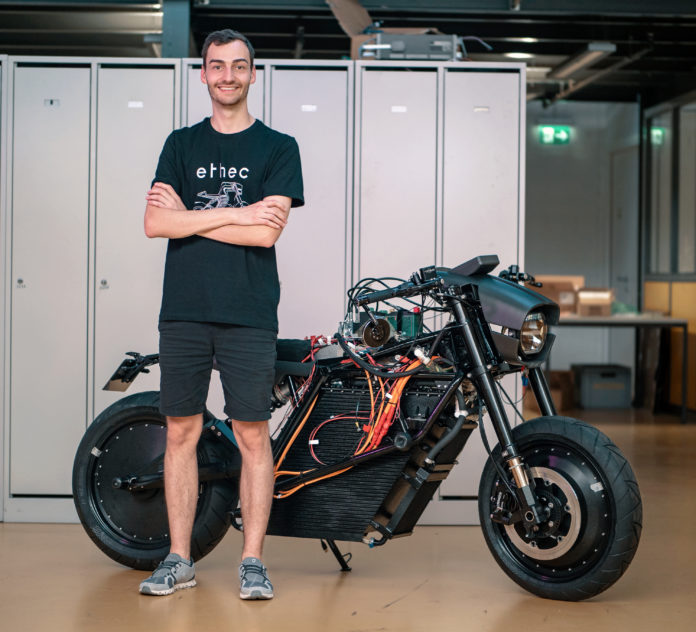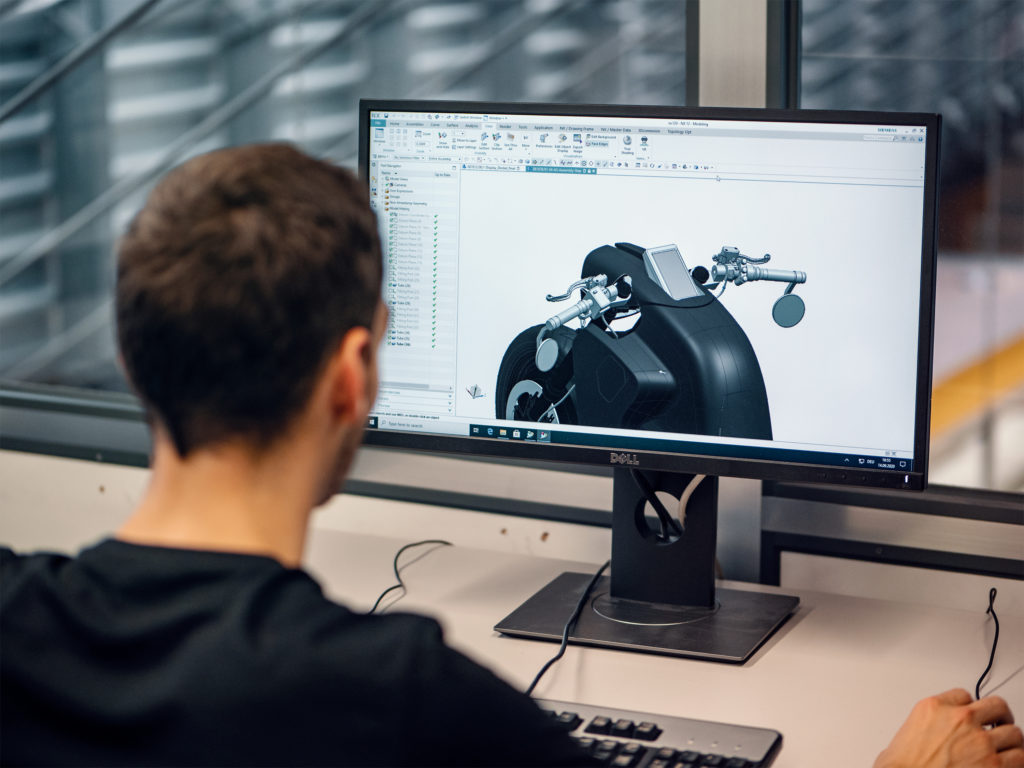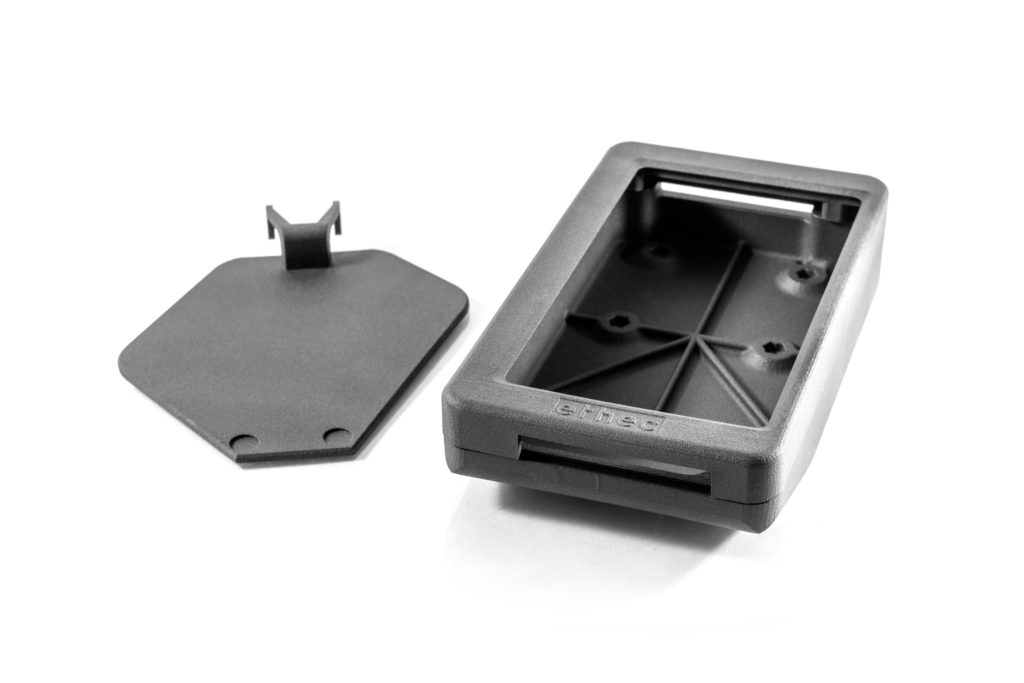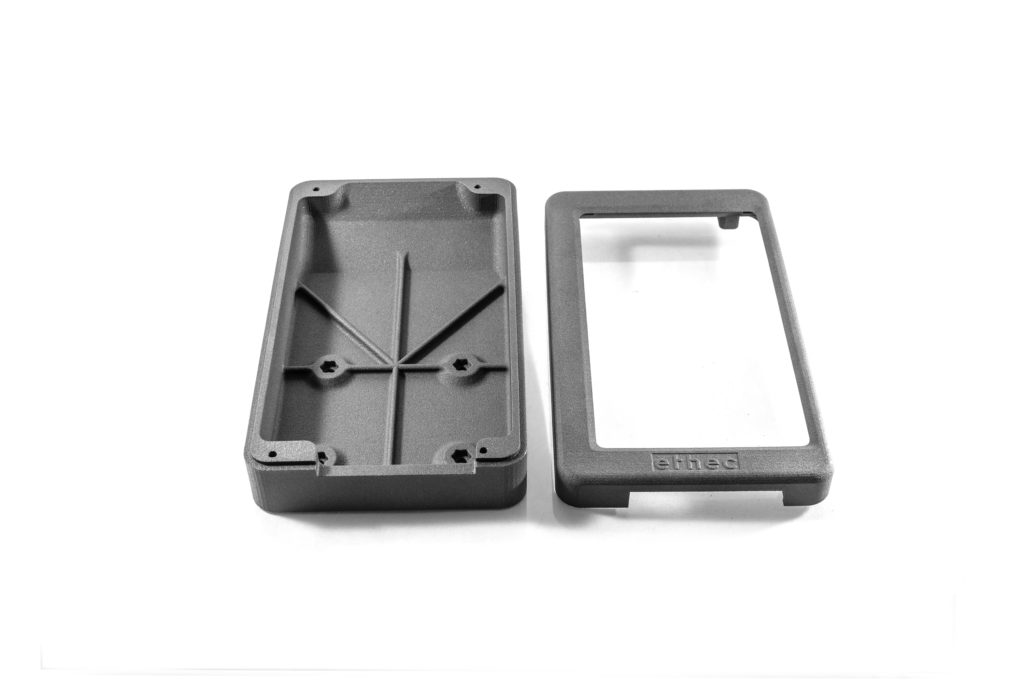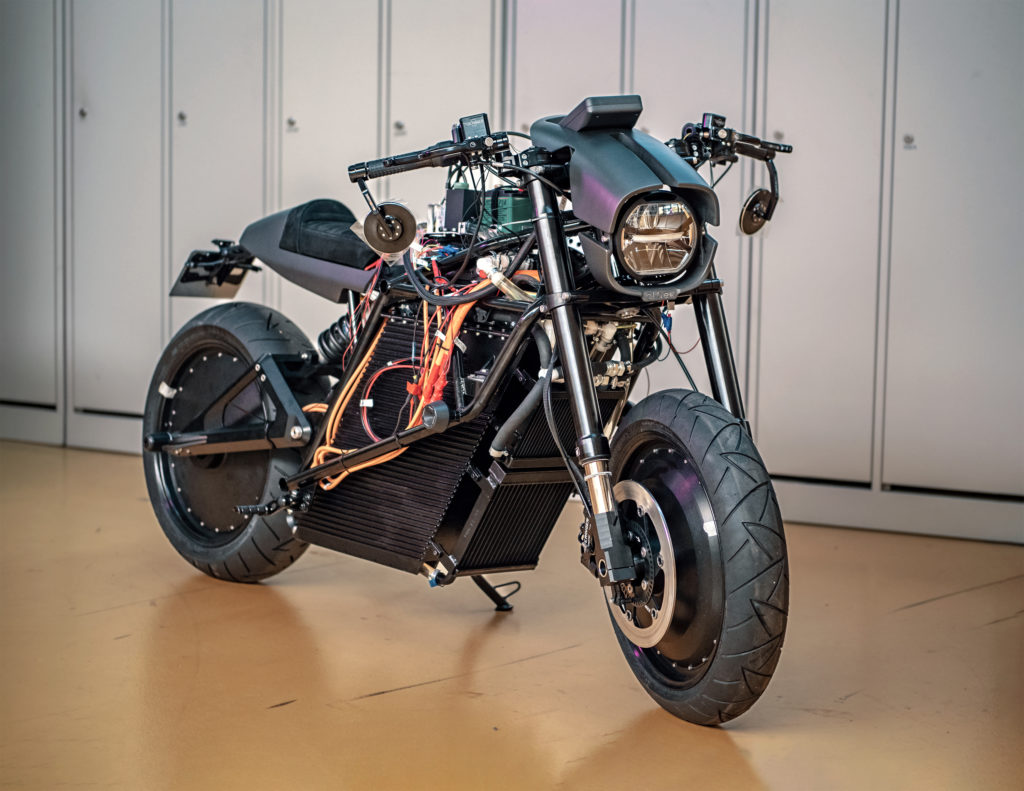The team used Stereolithography (SLA), Selective Laser Sintering (SLS) and Selective Laser Melting (SLM) to 3D print several design parts of the casing and structural components
As part of a Swiss student project named ETHEC city, a team of mechanical engineers from ETH Zurich led by Tobias Oesch creates a prototype of an electric motorcycle.
It took them one year to complete the whole project, from the concept to construction, assembly, and testing. One of the main issues, the technical lead was to determine to address was sustainability in mobility. Common motorcycles lose around 80% of energy at the front wheel, which leads to electrical vehicles with significantly shorter ranges. Their idea was therefore to integrate an electric motor in the front wheel as well. This way, they would be able to use it as a generator to recover the whole movement energy back into the system again.
“By recovering the braking power with a two-hub motor, it becomes possible to reach longer distances with a smaller battery, thereby drastically improving the efficiency of the motorcycle. The ETHEC city is primarily a research prototype for us to investigate this recuperation method and thus improve the e-mobility sector in the future”, Oesch explains.
For this project, the team needed to manufacture several design parts of the casing as well as structural components such as the mounting of the foot pegs. Moreover, to make the production and the assembly cost-effective while keeping the overall prototype lightweight, it was important for them to combine several functions into one part. That’s why they decided to rely on three various AM technologies: Stereolithography (SLA), Selective Laser Sintering (SLS) and Selective Laser Melting (SLM).
The engineers have been able to experience the advantages and areas for improvements of each technology. Reporting on how they found SLS technology, the team explained materials properties apply well to the technology which enables them to get more durable and strong parts.
With Sintratec as a manufacturer sponsor, they used the Sintratec S2 system and the manufacturer’s PA12 nylon powder – with convincing results.
For the technical lead, «the display case in particular had to be durable enough to be protected against the weather, strong enough to sustain mechanical impacts, and also robust enough to be used without deforming it» and SLS technology fulfills this demand.
“For our application, SLS was the best manufacturing solution. However, when it comes to larger series, it can become very expensive and I think it still has a long way to go regarding mass production”, the engineer concludes. Luckily, Dominik Solenicki, the company’s CEO told 3D ADEPT Media in an interview that the concept has been built with scalability in mind. Therefore, it’s just a matter of time before they get where the need to.
Remember, you can post free of charge job opportunities in the AM Industry on 3D ADEPT Media or look for a job via our job board. Make sure to follow us on our social networks and subscribe to our weekly newsletter : Facebook, Twitter, LinkedIn & Instagram ! If you want to be featured in the next issue of our digital magazine or if you hear a story that needs to be heard, make sure to send it to contact@3dadept.com



